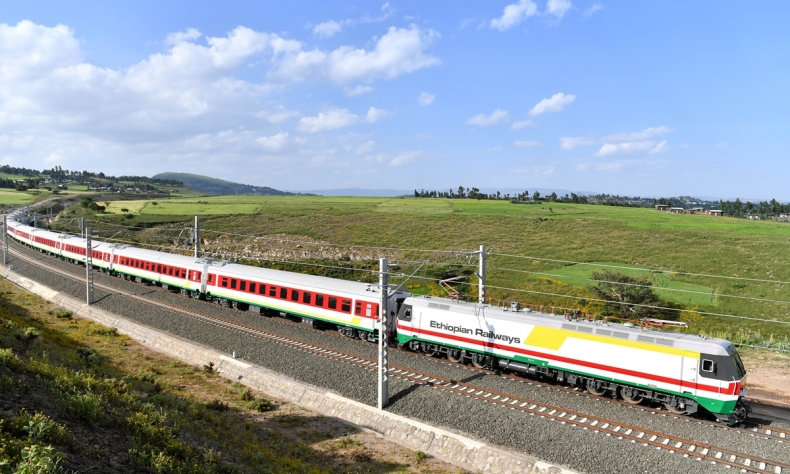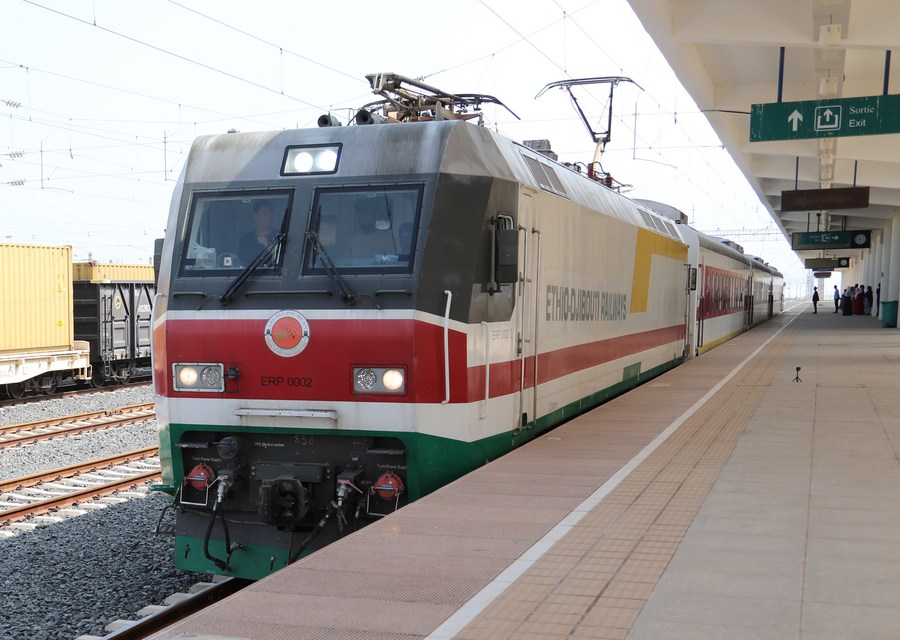Training Train Drivers

China is facilitating the much-needed development of railways in Africa through educational programmes.
As the train engine roars, doors of the wagons gently open at 07:30 a.m., with crew members waiting for the passengers to board before starting the journey for their next destination.
An hour before the departure, Marriam Gadesa heads to the locomotive cabin and quickly tests the locomotive’s power supply, and then starts the engine.
“After the engine is started, I do the electrical and air brake tests. Once all the passengers are onboard, the driver is given a signal to make final preparations for the journey from Addis Ababa to Djibouti,” Gadesa told ChinAfrica.
Despite being an electrical engineer at Ethio-Djibouti Standard Gauge Railway Share Co. (EDR), Gadesa, 30, aspires to become a train driver, especially as this traditionally male-dominated career has transformed significantly over the years, making it more common for woman to work as drivers.
Chinese investment
Considering the significant role railway plays in land transportation, trade facilitation, and economic and social development, railway experts say rail transport in most African countries has suffered from decades of low direct investment, poor infrastructure management and inefficient train operations.
Since 2001, Africa has recorded a very modest increase of 7 percent in freight transport, and a drop by the same amount in passengers, while the worldwide railway transport for freight and passengers has increased by more than 40 percent during the same period. These figures show that the development of the railway system in Sub-Saharan Africa still faces serious barriers, according to a recent study by the Sub-Saharan Africa Transport Policy Programme.
Chinese investment is playing a big role in changing this situation. For example, a Chinese sponsored programme is equipping young African train drivers with technology and skills training. The initiative has become the backbone of the Ethio-Djibouti Railway as it safely chauffeurs across the vast East African plateau. A joint venture between Ethiopia and Djibouti, EDR operates the 756-km rail route from Addis Ababa to the port of Djibouti. The daily passenger and cargo services of the East African railway contribute greatly to the socioeconomic growth of both countries.
In 2019, Zhengzhou Railway Vocational and Technical College (ZZRVTC) in Henan Province signed an agreement with EDR to train electric locomotive drivers for the Addis Ababa-Djibouti Railway – thanks to the Chinese government-sponsored programme.
The first batch of 28 trainees from Ethiopia and Djibouti recently got fully trained in driving, monitoring, and maintaining electrified trains after they underwent eight months of study at the Chinese college.
“Every single encounter and activity during the eight-month training in China has benefitted us a lot and has enriched us all. That will forever remain in our memory. A big thank you to the Chinese teachers for their careful guidance during the training and study period,” Tilahun Girma, the only woman in the class of 28 trainees, told ChinAfrica.
Yidnekachew Mekonen, an Ethiopian train driver who took the same training, echoed Girma’s sentiments, “Our training was adapted for our country’s locomotives. That knowledge will help me to contribute effectively to my country’s railway system and in turn to our socioeconomic emancipation.”

After becoming commercially operational in 2018, the Addis Ababa-Djibouti Railway became the first electrified cross-border railway in Africa. It is a flagship project under the framework of the China-proposed Belt and Road Initiative.
Designed to help to drive industrial development of the two neighbouring nations, the Addis Ababa-Djibouti Railway has created over 50,000 jobs in the two countries, laying a solid foundation for the development of railways, and has trained more than 3,000 professionals, according to the Ethiopian government.
Information from Ethiopia’s Ministry of Transport and Logistics shows that with the help of Chinese technology, the railway has also cut the transportation time for goods between the two nations from more than three days to less than 20 hours, and reduced the cost by at least a third, substantially bolstering the imports and exports of Ethiopia, a land-locked country in the Horn of Africa.
According to EDR, the railway has operated a combined total of more than 1,800 passenger trains, carrying nearly 530,900 passengers, and 6,133 cargo trains, transporting about 7.32 million tonnes of goods since it was put into operation in January 2018.
Serving the country
“The skills and technology transfer to the local staff will greatly enhance Ethiopia’s economic prospects and help Ethiopia to embark on the road to prosperity,” Liu Yu, minister counsellor for economic and commercial affairs of the Chinese embassy in Ethiopia, said, adding that training for local train drivers is an important part of cooperation between the two countries.
Ethiopian Minister of Transport and Communications Dagmawit Moges Bekele has since urged the young train drivers to use their skills to serve the country and contribute to the improvement of the railway sector in Ethiopia.
With the rapid advancement of China’s rail system, in particular the high-speed rail, ZZRVTC has indeed become a world-leading institution in the field of rail technology education.
“We actively cultivate talents for different countries. We have trained railway transportation technical personnel for Ethiopia, Laos, and Saudi Arabia. Simultaneously, we have established overseas branches to enhance vocational education and actively develop vocational training standards. We have already developed eight vocational standards in collaboration with Tanzania and Ethiopia,” ZZRVTC President Li Fusheng noted.
Given the prospects of the railway sector, Gadesa looks forward to switching from being an electrical engineer to becoming a fulltime train driver, and is waiting for another Chinese training opportunity to sharpen her career prospects and make strides in Ethiopia’s railway industry.
“My passion for the railway sector is hard to describe. Each time the train runs along a curve and I look behind and see more than 50 wagons being pulled gently, I feel awesome knowing that I am in charge of its powerful engine,” Gadesa said proudly.
 Facebook
Facebook
 Twitter
Twitter
 Linkedin
Linkedin
 Google +
Google +










